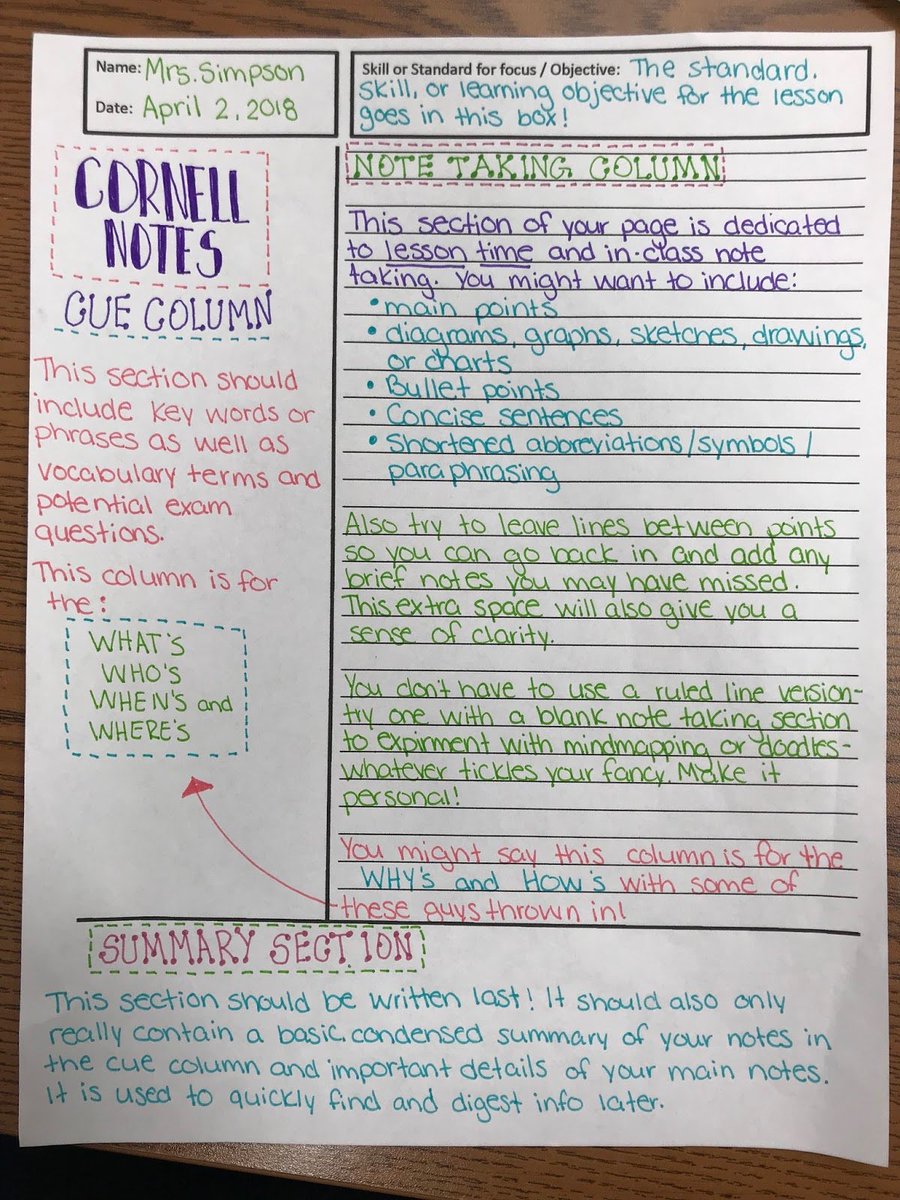
1/ Years ago I used something called paper, often with a pencil or pen. Maybe you have seen these ancient writing instruments in a museum. For handwritten notes, I used the Cornell Note taking system. I really liked it, it worked so well! Here is what a Cornell note looks like: 



2/ Basically you write the topic in the header, take notes in main part of the page, then in left column write brief highlights (like callouts). Then at the end, you write a summary of the main ideas.
Simple simple simple.
This method is still taught:
lsc.cornell.edu/how-to-study/t…
Simple simple simple.
This method is still taught:
lsc.cornell.edu/how-to-study/t…
3/ The benefit of the system is that it forced me to make very brief summaries of my notes as I was taking notes, and then to think about how to best summarize the whole lesson or research in the end. This method served as a way of being mentally active in the learning process
4/ The system also proved to be a wonderful memory aid, as when I returned to my notes, I could quickly visually see the flow of the lesson, along with the key ideas, and jump to relevant parts of the longer form notes I needed.
5/ Some 15 years ago I attended a multi month training program where I used Cornell notes. I recently came across those notes & was transported back in time. I was able to relive the training. I remembered classroom discussions, instructors, fellow students & key lessons learned
6/ Learning Cornell notes was simple. It took me just about an hour or two to learn the basics of the note taking system, then over a few months I practiced it whenever taking notes to make it familiar.
Little training + using it = beneficial results
Little training + using it = beneficial results
7/ In modern life, I rarely take handwritten notes. It is a lost art. I love the idea of doing it, but reality dictates that digital is more practical (phone, iPad, PC, etc).
However I long for the learning principles of this system coupled with its simplicity.
However I long for the learning principles of this system coupled with its simplicity.
8/ Do you have any “battle tested” methods of note taking from the old world that you miss? That proved valuable?
Could some of these old methods possibly be mapped into our new brave digital world?
Could some of these old methods possibly be mapped into our new brave digital world?
9/ I have it on my todo list to experiment with the Cornell note taking concept in Roam and Obsidian. Sure makes sense to me this would be possible, and would be helpful.
Might look something like this: (who can name the app I prototyped it in?)
Might look something like this: (who can name the app I prototyped it in?)

10/ Tell us your old school techniques and if you think they could be adapted to modern PKM.
Many are doing this with Zettelekasten as an example.
Many are doing this with Zettelekasten as an example.
• • •
Missing some Tweet in this thread? You can try to
force a refresh






